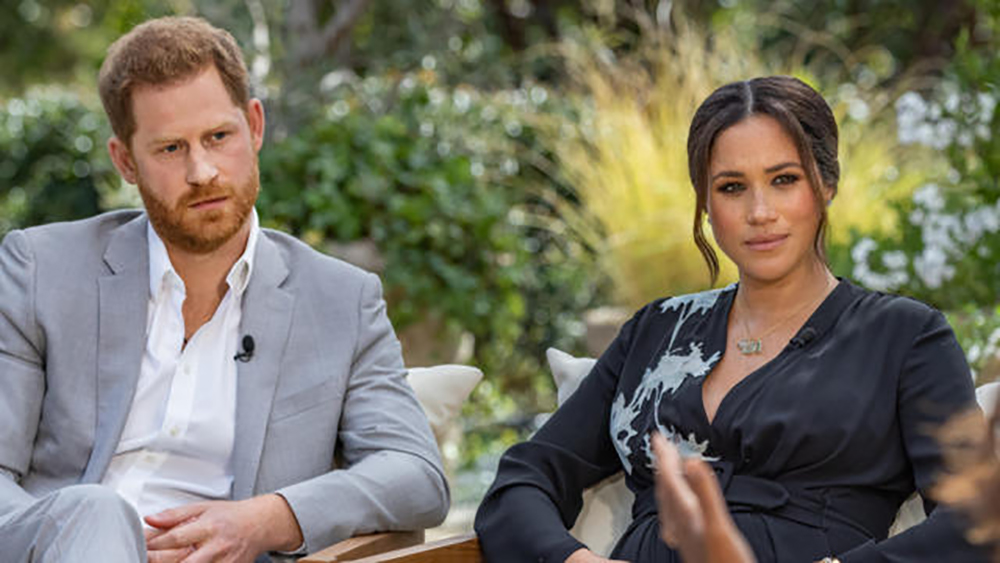By Kenneth Maxwell
On Friday 19th February Buckingham Palace announced that the Duke and Duchess of Sussex, would not be returning as working members of the Royal family: “The Queen has confirmed that in stepping away from the work of the royal family it is not possible to continue with the responsibility and duties that come with a life of public service. The honorary military appointments and Royal patronages held by the duke and duchess will therefore be returned to Her Majesty before being redistributed among working members of the Royal family.”
This means that Prince Harry will lose his role as the Captain General of the Royal Marines, a ceremonial position in the Queen’s gift, which was held by his grandfather, the Duke of Edinburgh, from 1953 until 2017.
The Sussex’s (that is Harry and Meghan) had in any case already signed lucrative contracts with Netflix and Spotify, and Megan (and Harry) are scheduled for an “intimate” interview with Oprah Winfrey to be broadcast on CBS on March 7th 2021.
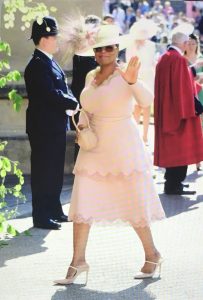
They were in any case already ensconced in a comfortable mansion in Montecito in Southern California, neighbours to Oprah’s 70 acre estate, living in the favorite retreat of the denizens of Tinseltown. None of this of course is very good timing with the 99 year old Duke of Edinburgh in hospital in London.
The English tabloid press are bound to have a field day. They are already smarting in any case from the libel judgment won by Megan Markle against the “DailyMail on Sunday” for having published parts of her private letter to her father.
Queen Elizabeth ll certainly (and most probably inadvertently) made an inspired choice when she bestowed on Captain Harry Wales (aka Henry Albert David Mountbatten-Windsor) the title of Duke of Sussex on the eve of his marriage to the American actress, Megan Markle, at St. George’s Chapel at Windsor Castle on May 19 2018.
It was a title first held by Prince Augustus Frederick (1773-1843), the ninth child of King George lll. That is the King who lost America.
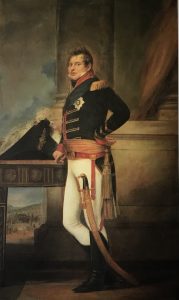
If nothing else the Royal Marriage of Harry and Megan achieved one thing: It joined one dysfunctional family to another.
It was the divorced Prince of Wales, the Duke of Cornwall, who walked Megan Markle down the aisle.
His second wife, Camila Parker Bowles, now the Duchess of Cornwall, sat close to the Queen. Megan’s father, Thomas Markle, the 76 year old American retired television lighting director and director of photography had remained at his home in Mexico.
Thomas Markle had been divorced from his first wife, Roslyn Loveless, in 1973. He had married his second wife, Doria Ragland, in 1979, and was divorced again in 1987.
Doria Ragland, however, did attend the wedding of their daughter to Prince Harry in St. George’s Chapel.
Prince Harry’s mother, Diana, the divorced Princess of Wales, had died at the age of 36 in a horrendous car-crash in 1997, in the Pont de l’Alma tunnel in Paris with her boyfriend, the Egyptian film producer, Dodi Fayad (who like Harry Wales had attended the Royal Military Academy at Sandhurst).
Dodi was the son of the billionaire, Mohamed Al-Fayad, then the owner of the Ritz Hotel in Paris (where the two were staying), and of Harrod’s in London, as well as of Fulham Football Club.
After the death of Wallis Simpson, the Duchess of Windsor in 1986, Al-Fayad had also taken over the lease of the “Villa Windsor” in Paris, which had been the home of the former King Edward VIII, who after his abdication in 1936 was known as the Duke of Windsor.
The Queen’s father only became George VI because of this abdication.
His eldest daughter, Elizabeth, only became the Queen as a result of these Windsor family contretemps.
Which of course involved a love affair with an American divorcee Wallis Simpson, much like Prince Harry’s infatuation and marriage Megan Markle, another strong willed American divorcee.
Tony Blair, the British prime minister at the time of Princess Diana’s death, had memorably called Diana “The People’s Princess”.
It was an inspired sobriquet.
It prompted the Queen to belatedly acknowledge Diana’s death in a public address from Buckingham Palace.
Diana was immensely popular. Unlike her husband Prince Charles who greatly resented Diana as a result.
Mohamed Al-Fayed established a memorial shrine at Harrods to Diana and Dodi in 1998 with photos of the two behind a pyramid shaped display which held the wine glass still smudged with lipstick from Diana’s last dinner at the Ritz Hotel.

In 2005 he unveiled a bronze statue he had commissioned named the “innocent victims” which portrayed Diana and Dodi dancing on a beach beneath the wings of an albatross. It remained at the bottom of the main staircase at Harrods until Al-Fayed sold the luxury department store to the Qatari Royal Family in 2010 after which the statue was removed.
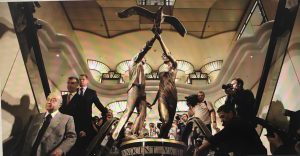
To the surprise of many Harry and Megan choose the name ”Archie” for their first born son. In 2020 they were already established in Southern California after “Megxit.”
That is what the Rupert Murdoch owed English tabloid newspaper the “Sun” dubbed Megan and Harry’s exit from Royal duties in January 2020. Murdoch is no great fan of British royalty.
And the sons of Princess Diana are no big fans of the British tabloid press. “Megxit” is a clever play on Brexit.
The Sussex couple named their new enterprise “Archiewell Inc”. Curiously neither Harry nor Megan seem to have realized that many “old folk” in Britain will have remembered another “Archie”, Peter Brough’s ventriloquist dummy “Archie Andrews”.
The dummy “Archie” which in the 1950s had 15 million fans was eventually sold at auction in Taunton, Somerset, in 2005 for £35.000. (Peter Brough died in 1999). “Archie Andrews” who was no beauty was the object of many a British child’s nightmares.

Growing up in Somerset during the 1950s l never found “Archie Andrews” entirely convincing since Peter Brough’s mouth could be seen moving when the “Archie Andrews” show transferred from the radio to television. Archie had originally been a Music Hall stunt where the audience was some distance away. On the radio it did not matter at all if Peter Brough’s mouth moved or not. Television was another matter. The American ventriloquist version was Edgar Bergen’s dummy “Charlie McCarthy” (Edgar Bergen was more famous later-on as the father of Candice Bergen).
I am not sure if “Charlie McCarthy” induced nightmares in sleeping American children. Probably not since “Charlie McCarthy” was very well dressed and behaved.
And after all “he” was an “All-American” dummy.
The irony is that the original Duke of Sussex, Prince Augustus Frederick, born in London on 27th of January 1773, was tall and good looking, and he was highly intelligent, unlike Harry Wales, the current Duke of Sussex, who is by all accounts not the brightest spark.
Prince Harry had taken two A-levels at Eton, receiving a B in Art and a D in geography. He was, however, apparently “a top tier athlete” in Polo and Rugby Union. He also “received help”(it is alleged) on the A-level “expressive” project which he needed to secure his place at the Sandhurst.
He went on to a ten year military career which included two deployments in Afghanistan, the first British Royal, to have been in a combat zone since the Falkland War where his uncle Prince Andrew had served.
The biographer Clive Irving recently observed (when discussing the unsuitability of Prince Charles ever becoming Charles lll), that Prince Andrew’s “libido and brain separated long ago.”
He remains, however, the Queen’s favorite son. Prince Harry has also had his misadventures in the past. From partying in a Nazi uniform, to his escapades in Las Vegas when he was photographed naked and drunk at a party clutching an equally naked young lady.
The photographs were published needless to say in Rupert Murdoch’s tabloid the “Sun” in Britain (but not in the rest of the British press out of deference, though the photographs were published elsewhere outside Britain.
This was much as the British press had avoided any mention of King Edward VIII’s affair with Wallis Simpson despite the fact that it was headline news elsewhere across the world.
But Prince Harry’s behaviour was nothing compared with an antics of his uncle, Prince Andrew, the Duke of York, and his lingering friendship with the convicted child sex trafficker the late Jeffrey Epstein.
Megan Markle seems to have curbed Prince Harry’s tendencies in that direction. Prince Harry’s ten years of military years, and two deployments in Afghanistan were admirable and led him to establish the “Invictus Games” for wounded service personnel, which is a very worthy endeavour, and which he will continue from his Southern California bolthole.
One his great regrets in leaving the royal family was having to step down as Captain General of the Royal Marines. Prince Harry wore his full dress uniform at the commemoration of the 75th anniversary of the end of WW2 and of the 80th anniversary of the formation of the British commandos at the Royal Albert Hall on March 7th 2020, during one of his last appearances with the Megan, the Duchess of Sussex, as a “working Royal.”

He received a warm standing ovation.
Prince Augustus Frederick (1759-1840) like his successor as the Duke of Sussex was a rebel.
He too did not marry in a manner that the British establishment approved. He had studied at the German university of Gottingen in Hanover. He had travelled throughout France and Italy and settled in Rome in where he met and fell in love with Lady Augusta Murray, the daughter of the Count of Dunmore, a Scotsman and a Catholic, who he married in secret in Rome in April 1793 at the Hotel Sarmiento in a Church of England ceremony
. In September 1793 Prince Augustus Frederick returned to London followed by his wife and the marriage ceremony was repeated in December 1793. Lady Augusta was already pregnant with their first child. The Royal Marriage Act of 1772, prohibited marriages of princes without the royal approval. In 1794 Augustus Frederick was forced to leave England settling in Italy and afterwards in 1798 in Berlin. The marriage was annulled in 1794 but Lady Augusta left England in secret and in August 1799 and joined her husband in Berlin.
While in Berlin, on 20 December 1798, Prince Augustus Frederick was initiated into the Berlin Masonic Lodge “Royal York zur Freundschaft.” His initiation into freemasonry was to have a profound influence on his later life. During May 1800 Prince Augustus Frederick returned to England and after separation from Lady Augusta (although she had a second child by him, Augusta Ema, born in August 1801), he was granted the title of Duke of Sussex, a seat in the House of Lords, and an annual income of £12,000, later increased to £18,000 and finally to £20,000.
The new Duke of Sussex then left for Lisbon without Lady Augusta, where he established his residence in the Palácio das Necessidades (which is today the elegant seat of the Portuguese foreign ministry.).
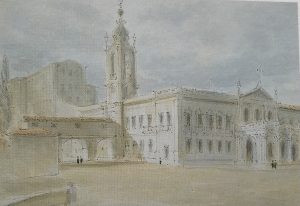
He collected a small court around him of young aristocrats, intellectuals, and military officers, many of them freemasons. In 1802 he was visited in Lisbon by the Prince Edward, Duke of Kent, (1767-1820), then the governor of Gibraltar, who was the father of the future Queen Victoria.
The Duke of Kent went to North America and from Canada visited New York, the first British Royal to do so. In Portugal the Duke of Sussex sponsored the consolidation and recognition of Portuguese freemasonry and the birth of the Grand Lusitania Orient (1802) and its recognition by English freemasonry.
These Masonic connections in Portugal were to play a very important role in his own future and that of Brazil.
In 1796 D. Rodrigo de Souza Coutinho who was the godson of the Marques de Pombal (1699-1782), the de-facto prime minister of Portugal between 1750 and 1777, and the radical reformer of the University of Coimbra, had been recalled to Lisbon from Turin where he was the Portuguese ambassador, and had joined the government in Lisbon as the Minister of the Navy and the Overseas Dominions. D. José, the heir apparent had died of smallpox at the age of 27 in 1788.
The Portuguese monarch, Queen Maria l, had been showing increasing signs of old mental instability and was officially constrained in February 1792. In 1799 D. João assumed the title of Prince Regent. In Britain between 1788-1789 King George lll had suffered his first spell of madness.
And in 1811 in the face of George lll’s continuing ravings, his son was eventually declared by parliament to be the Prince Regent. Both Britain and Portugal each therefore had mad rulers, both the King of England and the Queen of Portugal safely tucked away from public view. In Lisbon D. Rodrigo found a major subliminal conflict for influence between the pro-English and pro-French factions at court, reflecting the broader European conflict between the two nations, and the balance of influence between the two factions in Lisbon was always fluid and precarious.
Rodrigo’s main focus was on reforming the colonial system. He employed many of the young graduates of the reformed university of Coimbra, including the 24 year old Brazilian born graduate, Hipólito José da Costa Pereira Furtado de Mendonça, who he sent on an official mission to the United States to examine the new agricultural and manufacturing techniques being developed there, especially in tobacco and cânhamo, a plant from which a coarse fibre is obtained used to make ropes, bags, sails as well as cannabis (hashish or marijuana), and to also visit Mexico to obtain cochineal beetles with the objective of developing the cochineal industry in Brazil.
Hipólito da Costa had been born in 1774 in Colônia do Sacramento, at the time a fortified Portuguese outpost on the northern bank of the Rio da la Plata opposite Buenos Aires.
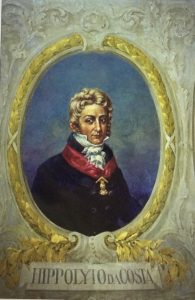
Hypolito da Costa arrived in Philadelphia in late December 1798, which was then the capital of the United States. He found the county in the midst of a crisis over the Alien and Sedition Acts introduced by President John Adams. Resolutions passed in 1798 and 1799 by the Kentucky and Virginia legislatures opposed the Acts. Thomas Jefferson held that the federal government had no right to exercise powers not delegated to it by the Constitution.
The Sedition Act passed on July 14th 1798, declared any “treasonable activity”, including the publication of “any false, scandalous and malicious writing” was a high misdemeanour, punishable by fine and imprisonments. Twenty-five men most of them editors of Republican newspapers were arrested and their newspapers forced to shut down.
One of those arrested charged with libelling President Adams was Benjamin Franklin Bache, editor of the Philadelphia Democrat-Republican “Aurora.”
The young Bach had accompanied his grandfather Benjamin Franklin to Paris at the age of seven has been educated in France and was a fervent Francophile. He had returned to Philadelphia in 1785. He was a critic of George Washington and supporter of the Jeffersonian-Republican faction and had run the “Aurora” from the time of his grandfather’s death in 1790 until his own death in 1798 from yellow fever.
After Thomas Jefferson’s election to the presidency in 1800 once in office Jefferson pardoned all those convicted under the Sedition Act and Congress restored all fines paid with interest.
Hypolito da Costa remained in the US until 1800 reporting to D. Rodrigo and keeping in a dairy of his activities. In Philadelphia he joined the Masonic lodge.
He met President John Adams, Thomas Jefferson, attended the House of Representatives and the Senate and the Supreme Court. He subscribed to the “Aurora” which published detailed political and economic intelligence and diplomatic cables as well as economic, political and social news. He visited the churches and meeting houses of the various religious denominations, and the synagogue, and he observed the Quakers. In 1799 he travelled through the northern states, attending the commencement exercises at Columbia College in New York City, and visiting the Niagara Falls and Canada. Then he went south to Virginia and the Carolinas.
He eventually gained a passport from the Spanish minister to go to Mexico. The delay was Hipólito observed because “he supposed l was a kind of political spy.” Which indeed to some degree he was. His visit to Mexico was brief. But he did collect cochineal beetles which unfortunately died on their arrival in Philadelphia.
On his return to Lisbon in 1801 he was appointed as the literary director of the Royal Press and in 1801 and made an official visit to England. But on his return he was imprisoned for three years by the inquisition accused of disseminating Masonic materials. Escaping he fled Portugal via Spain and Gibraltar and from there took ships to London where he was protected the Duke of Sussex and become his private Secretary.
In 1808 began began the publication in Portuguese in London of the “Correio Brasiliense” which was to be the first Brazilian newspaper very much in the model of Philadelphia “Aurora.” And he published a stinging account of his imprisonment by the Portuguese inquisition.
The first edition of the monthly “Correio Braziliense” was published on June 1st 1808 and it continued without interruption until 1st of December in 1822. Hypolito Costa attacked his old patron, D. Rodrigo de Souza, now the count of Linhares, who was then the chief minister of the Portuguese government which had been established in Rio de Janeiro where it had fled to escape Napoleon’s invading army in 1807. The “Correio Brasiliense” was sent clandestinely to Brazil and espoused liberal ideals, supported the idea of a constitutional monarchy, covered the Pernambuco revolution of 1817, and supported the independence of Brazil.
The “Correio” advocated the liberty of the press, security of property, trial by jury, public accountability of public accounts, access to all to public offices, the abolition of the inquisition, the moving of the capital to the interior, and the gradual abolition of slavery, and the encouragement of immigration to Brazil from Germany, Scotland, Ireland, Holland and Italy. Hypolito da Costa was appointed to be the Brazilian Representative in London after the declaration of Brazilian Independence in 1822. But he was to die at the age of 49 in Kensington on September 11, 1823, soon after he had received the news of his nomination.
Prince Augustus Frederick, the first Duke of Sussex, after his return to England in 1804 had taken up his seat in House of Lords and for many years stood in opposition to Tory governments, defending religious emancipation of catholics, non-conformists, and Jews, and fighting for the abolition of slavery.
In 1812 he became the assistant Grand Master and in 1813 the Grand Master of the Great Lodge of England, a faction known as the Moderns. In December 1813 the Duke of Sussex united the two factions of the freemasons, the moderns and the ancients, and was elected as Grand Master of the United English Lodge. He was elected president of the Royal society in 1835.
The only public visit of the current Duke and Duchess of Sussex to the country of Sussex took place in 2018 when they visited Chichester and at Edes House, were shown a rare copy of America’s Declaration of Independence.
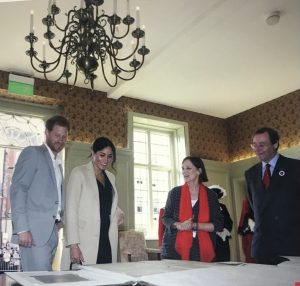
Discovered by two Harvard University researchers in 2017 the parchment manuscript copy was folded away in the West Sussex Record Office in Chichester, and belonged to the Third Duke of Richmond, known as “Radical Dick” who supported the American colonists.
The only other copy is in the National Archives in Washington. DC.
Unlike his father George lll who opposed American independence, his son the first Duke of Sussex, and his private Secretary, Hypolito da Costa, supported the independence of Brazil.
After the death of Lady Augusta in 1830, the Prince Augusto Frederick, Duke of Sussex, remarried Lady Cecilia Underwood, once again violating the Royal Marriage Act. But this was accepted by the Court and by pubic opinion, and unlike the (now) old Queen Elizabeth ll, the (then) young Queen Victoria, much appreciated and accommodated her uncle.

The first Duke of Sussex died in 1843 a rebel to the end.
He was not buried at Windsor Castle in St. George’s Chaple, but was laid to rest instead in the public cemetery at Kensal Green, where his modest tomb remains to this day (next to that of Lady Cecilia), though, like the first Duke of Sussex, his grave is largely forgotten.


